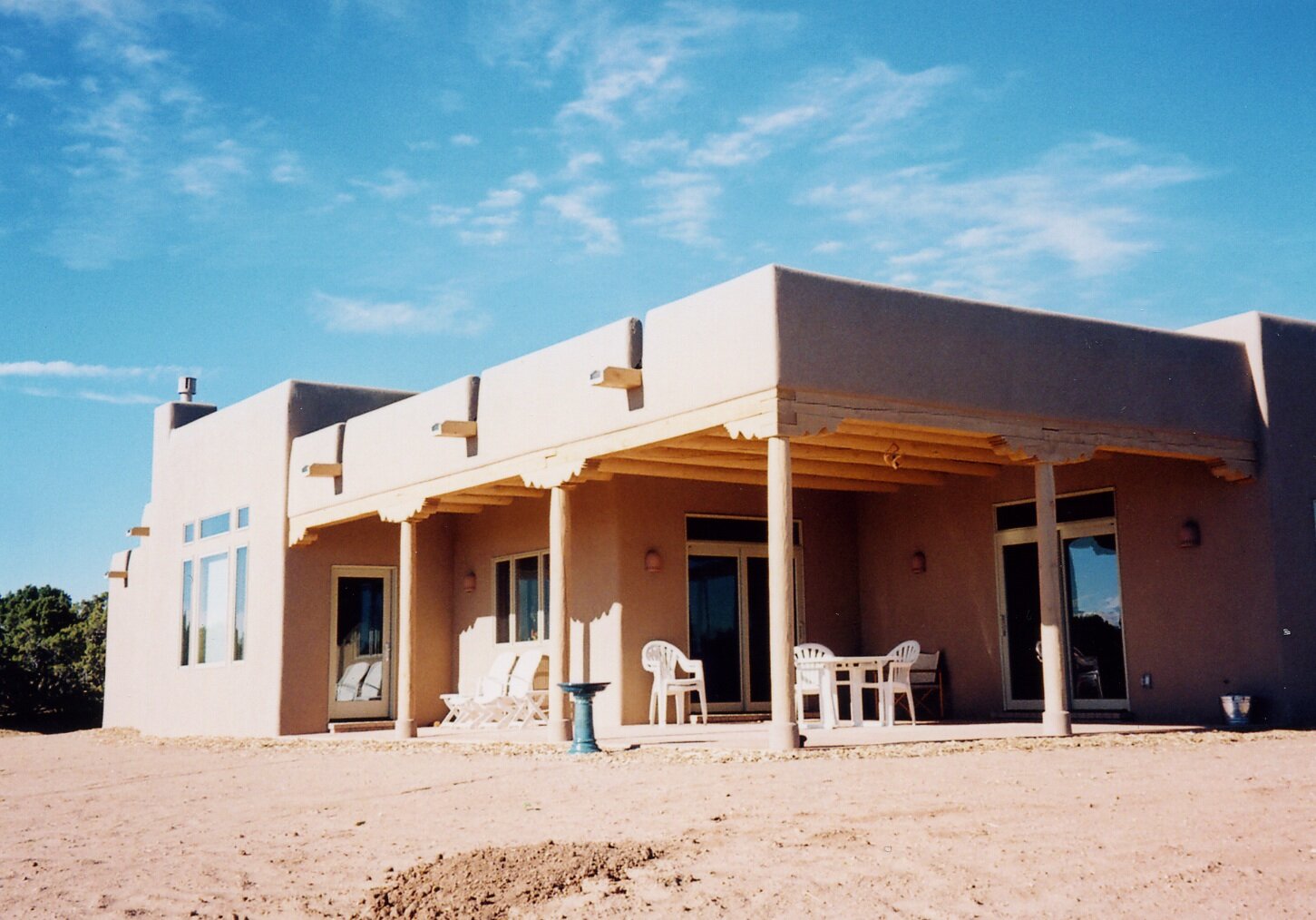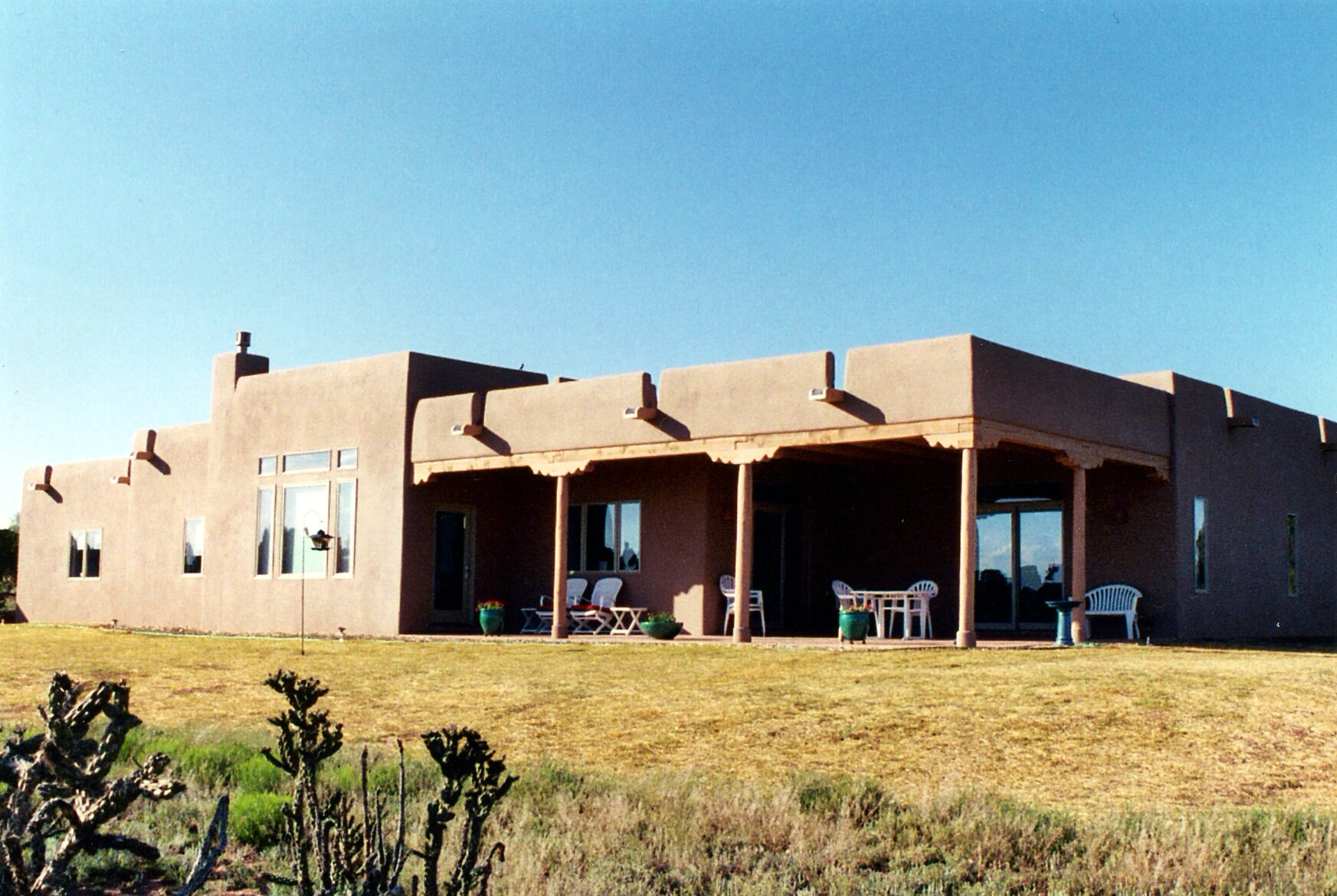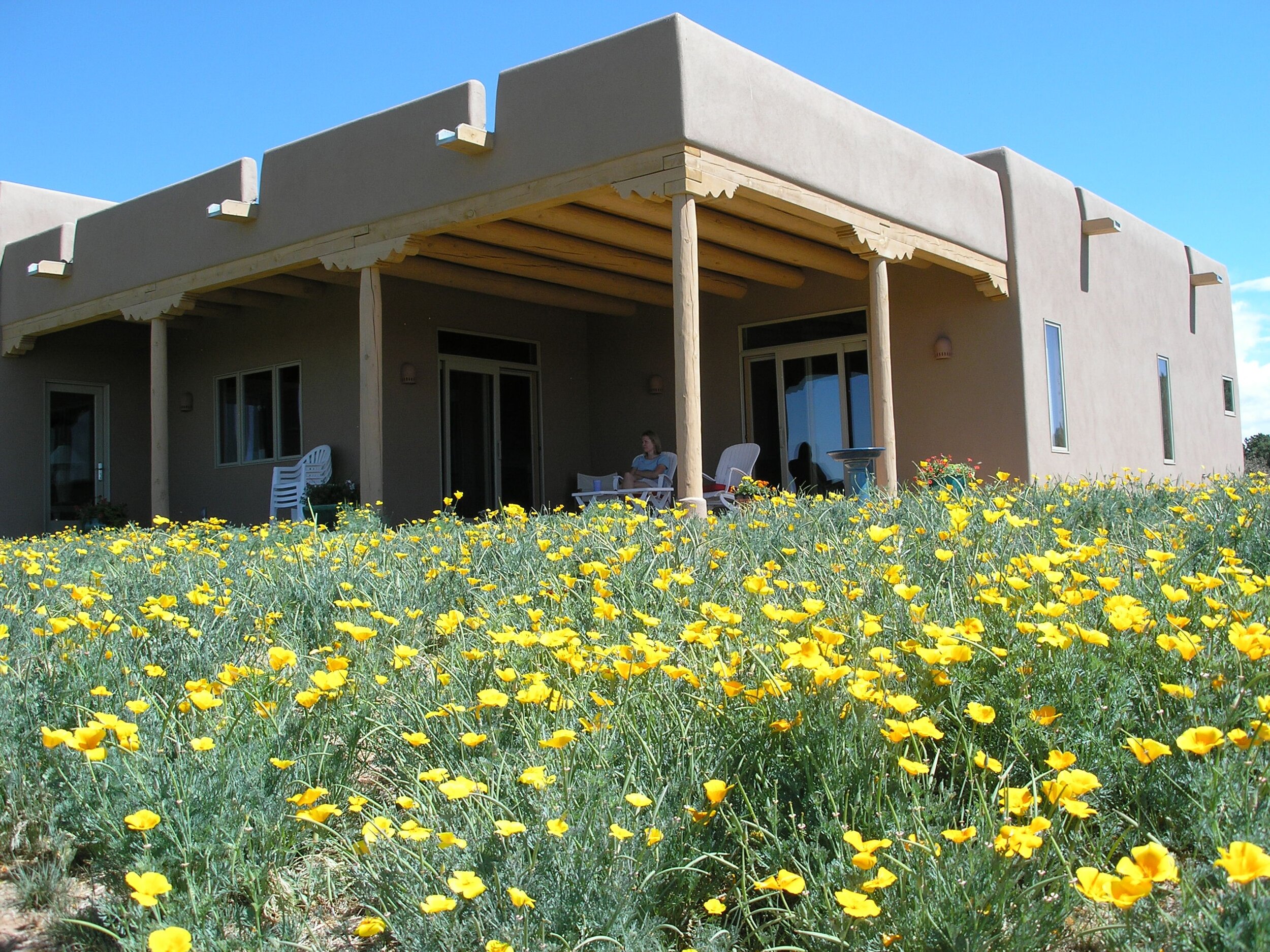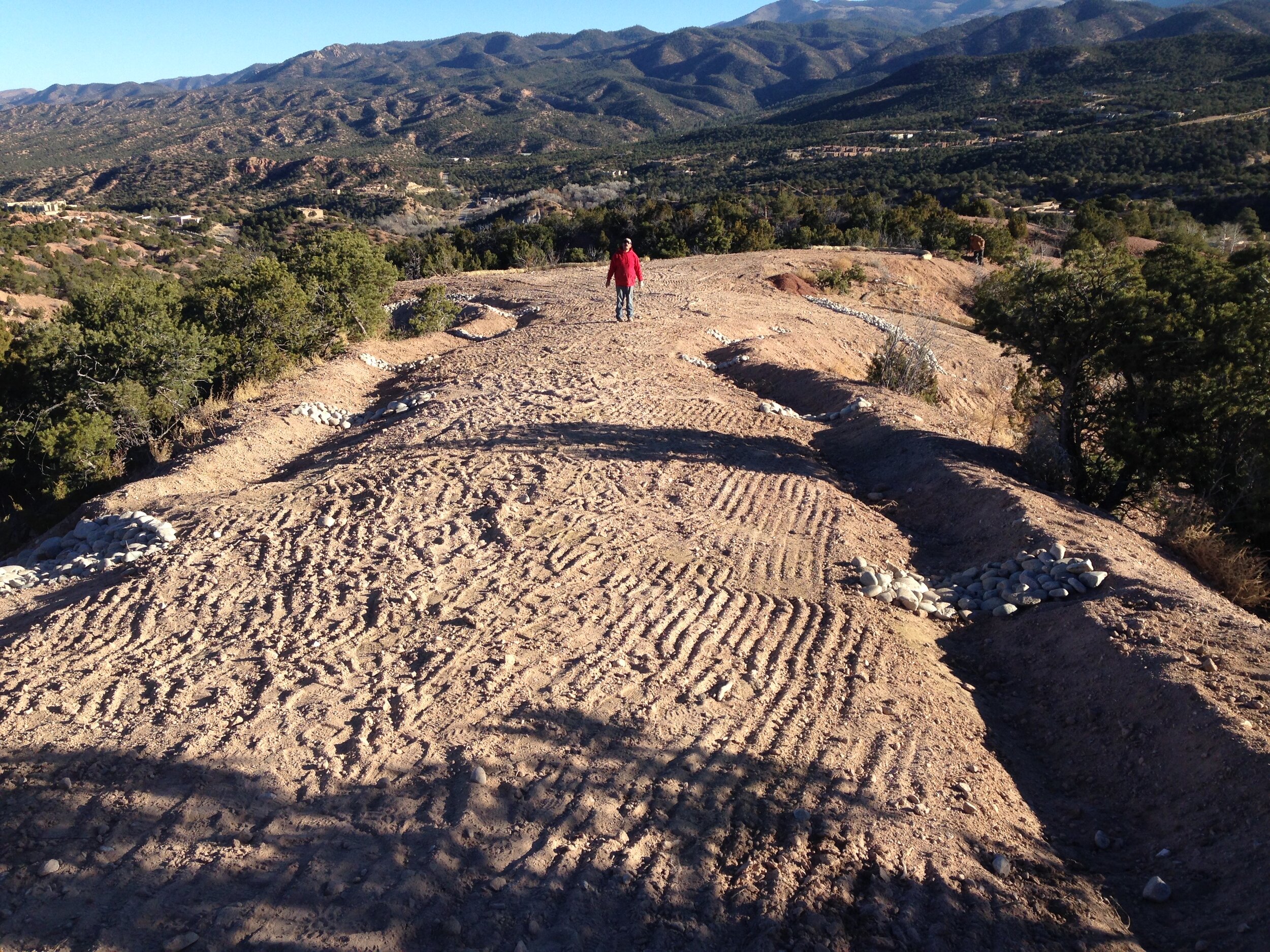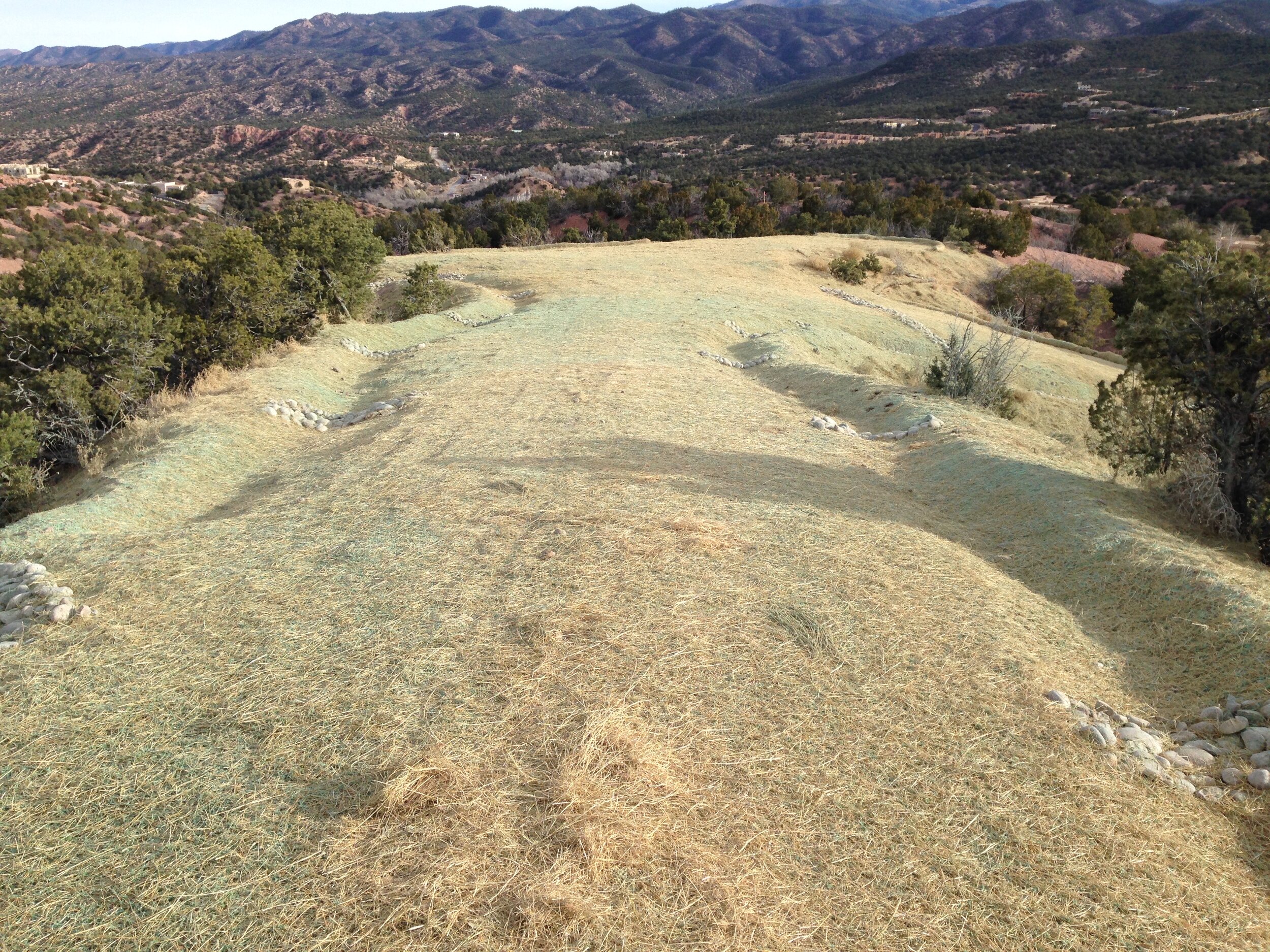Topsoil loss is a global crisis. Half of the world’s topsoil has disappeared in the last 150 years.
Here in the southwest, harsh weather conditions, construction damage, and changes in topography can leave disturbed soils prone to erosion and rapid colonization by invasive weeds. Russian thistle (tumbleweed) and Kochia scoparia are two that you may recognize. These fast-growing plants, while considered undesirable, are simply playing their role in ecological succession. They hold and build the soil, preparing it for native grasses and forbs to return. This process takes many years, yet with a little thoughtful intervention we can establish those natives in just a few seasons.
San Isidro Permaculture has re-vegetated hundreds of acres for both private landowners and government entities. Throughout the years, we have continued to develop our process for effective hydroseeding. As any farmer or gardener will tell you, it all starts with the soil. We begin by assessing the site’s strengths and weaknesses, and recommending corrective measures such as loosening the soil, adding organic amendments and compost, and developing site-specific seed varieties.
The seed mix for any particular site is determined by the existing local grasses and wildflowers, and may also include native shrubs to combat the effects of erosion. Blue Grama hay is applied as a mulch over the seeded area to help shade the soil, provide a protective blanket over the seeds, and reduce feeding by birds. The hay mulch is covered with recycled hydromulch to hold it in place while the seeds germinate and establish.
At this stage, temporary irrigation can be installed to water the seeds through their first season. We have also seen great results from the ancient practice known as “waiting for rain”. This can make sense on larger re-veg sites where temporary irrigation is not a possibility.
This may seem like the natural end of the process. However, a few months after seeding, you might notice that the local weeds are benefiting from your efforts, too. Adventitious plants can move into newly seeded areas, crowding others out. Thankfully, these weeds are often annuals, and they won’t live longer than a growing season. Hand-cutting in a small area, or collecting the seed heads with a bagged lawnmower a few times each summer, is enough to keep invasive plants at bay while grasses and wildflowers are establishing themselves. The denser and healthier these desirable plants become over time, the less hospitable the site is to weeds.
The potential for this process to quickly reclaim the health of a site captured our attention two decades ago, when we first began providing the service to northern New Mexico. Native re-vegetation means engaging in a partnership with nature, and we are glad to facilitate that.


